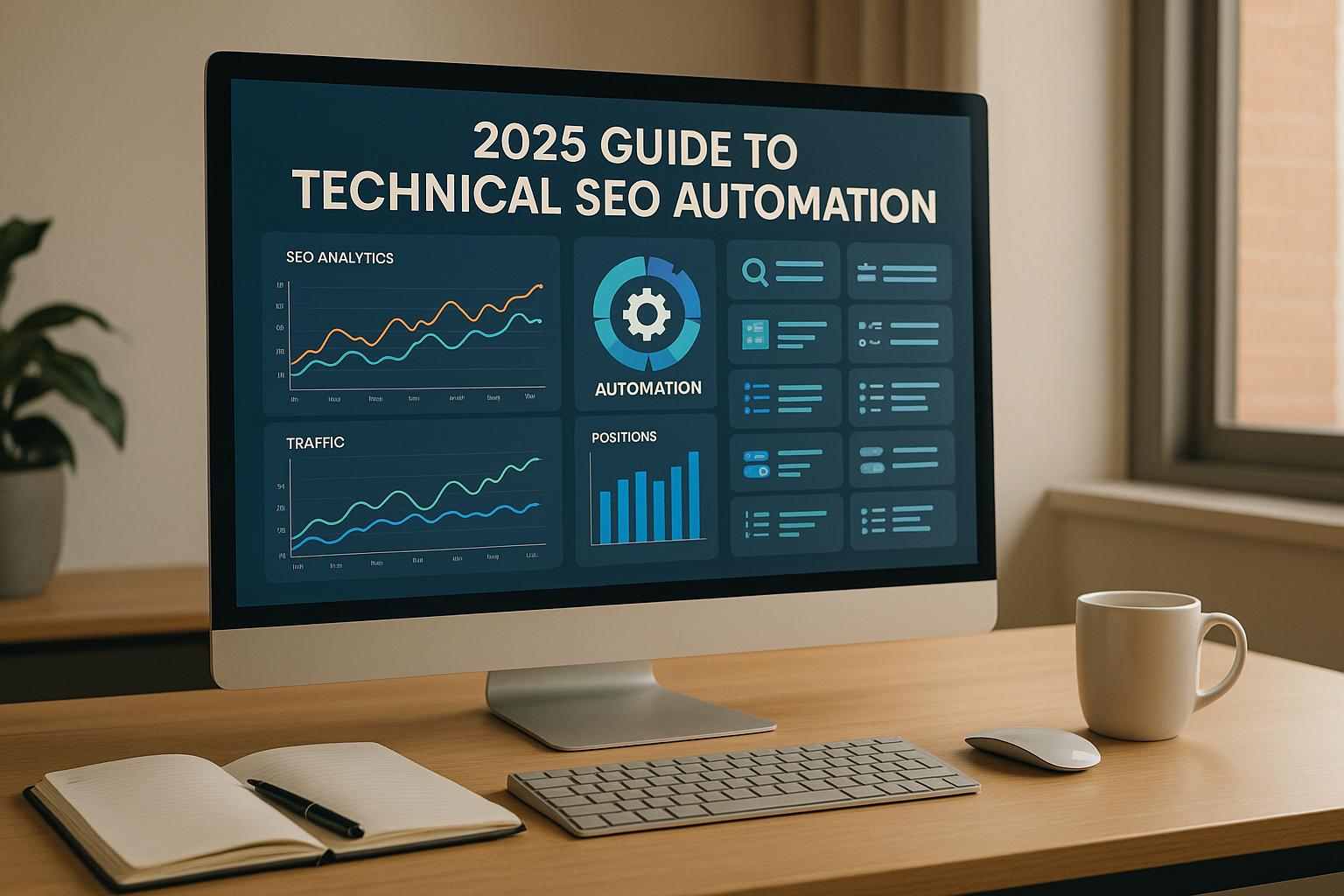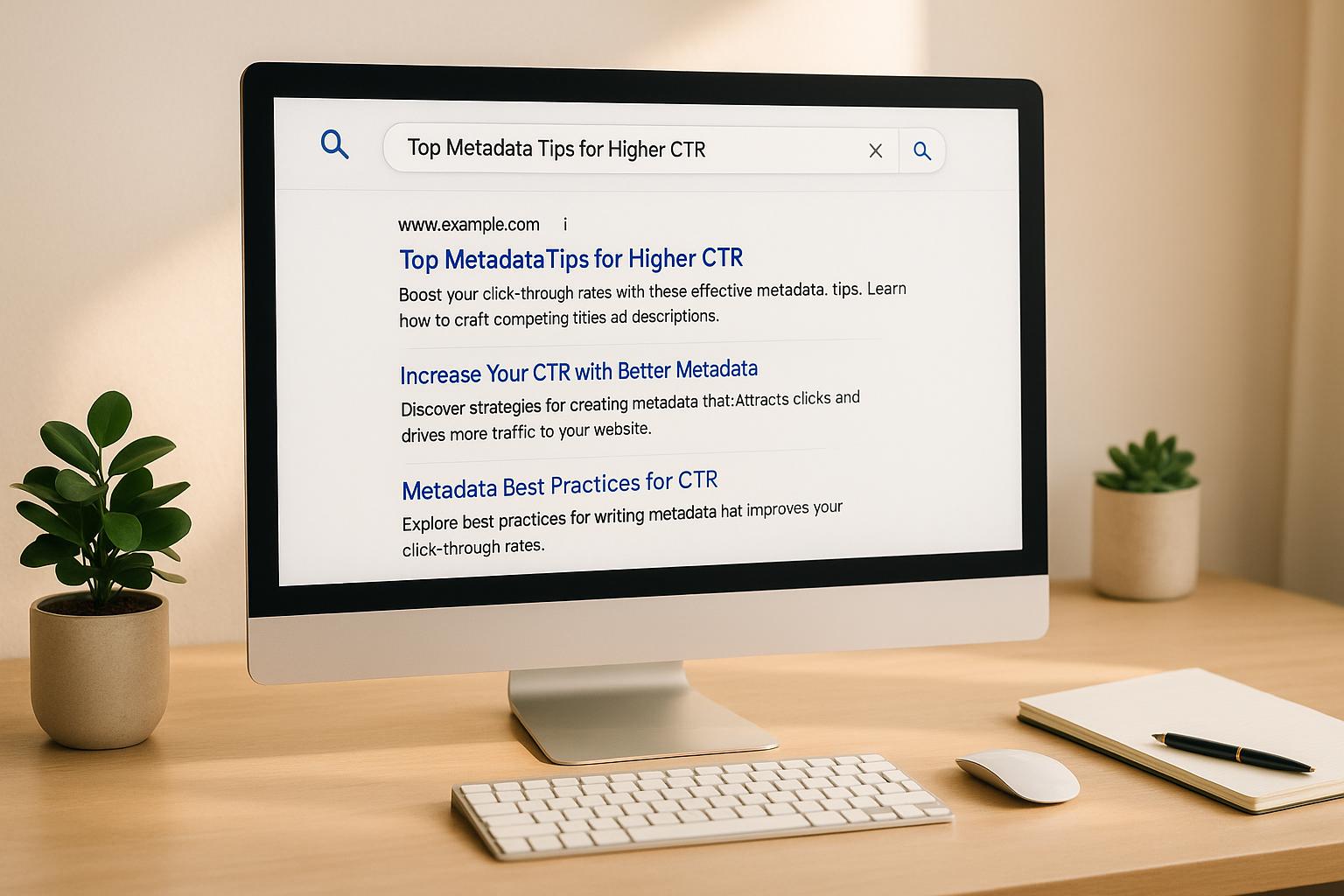Mobile crawlability is essential for SEO in 2025, with Google prioritizing mobile-first indexing. If your site isn’t mobile-friendly, you risk losing visibility, traffic, and conversions. Here’s a quick look at the top tools to analyze and improve your mobile crawlability:
- Google Search Console (Free): Spot indexing issues, track mobile usability, and monitor Core Web Vitals. Ideal for small websites.
- Screaming Frog ($279/year): Desktop tool for deep mobile audits, including viewport issues, tap target analysis, and integration with Lighthouse.
- SEMrush Site Audit (Starts at $139/month): Offers mobile-specific crawling, Core Web Vitals insights, and AMP optimization.
- Sitebulb ($35/month): Visual reports, accessibility checks, and scalability for up to 10 million URLs.
- DeepCrawl (Lumar) (Custom Pricing): Enterprise-grade tool for large sites, with mobile content mismatch reports and JavaScript rendering.
- OnCrawl ($49/month): Tracks mobile-first indexing, evaluates performance, and offers advanced segmentation.
Quick Comparison
| Tool | Best For | Price | Key Features |
|---|---|---|---|
| Google Search Console | Beginners, small sites | Free | Mobile usability reports, indexing insights |
| Screaming Frog | Technical SEO, small sites | $279/year | Lighthouse integration, viewport analysis |
| SEMrush Site Audit | Agencies, large sites | $139+/month | Mobile crawling, Core Web Vitals, AMP optimization |
| Sitebulb | Mid-sized to large sites | $35+/month | Accessibility checks, visual reports, scalable for large URLs |
| DeepCrawl (Lumar) | Enterprises | Custom Pricing | Mobile mismatch reports, JavaScript rendering, log file analysis |
| OnCrawl | Small to enterprise sites | $49+/month | Mobile-first indexing tracking, advanced segmentation, crawl budget analysis |
Choose a tool based on your website size, budget, and technical expertise. Start optimizing today to improve rankings, user experience, and conversions.
The Crawler Landscape | Crawling Tools Overview | Lesson 6/34 | Semrush Academy
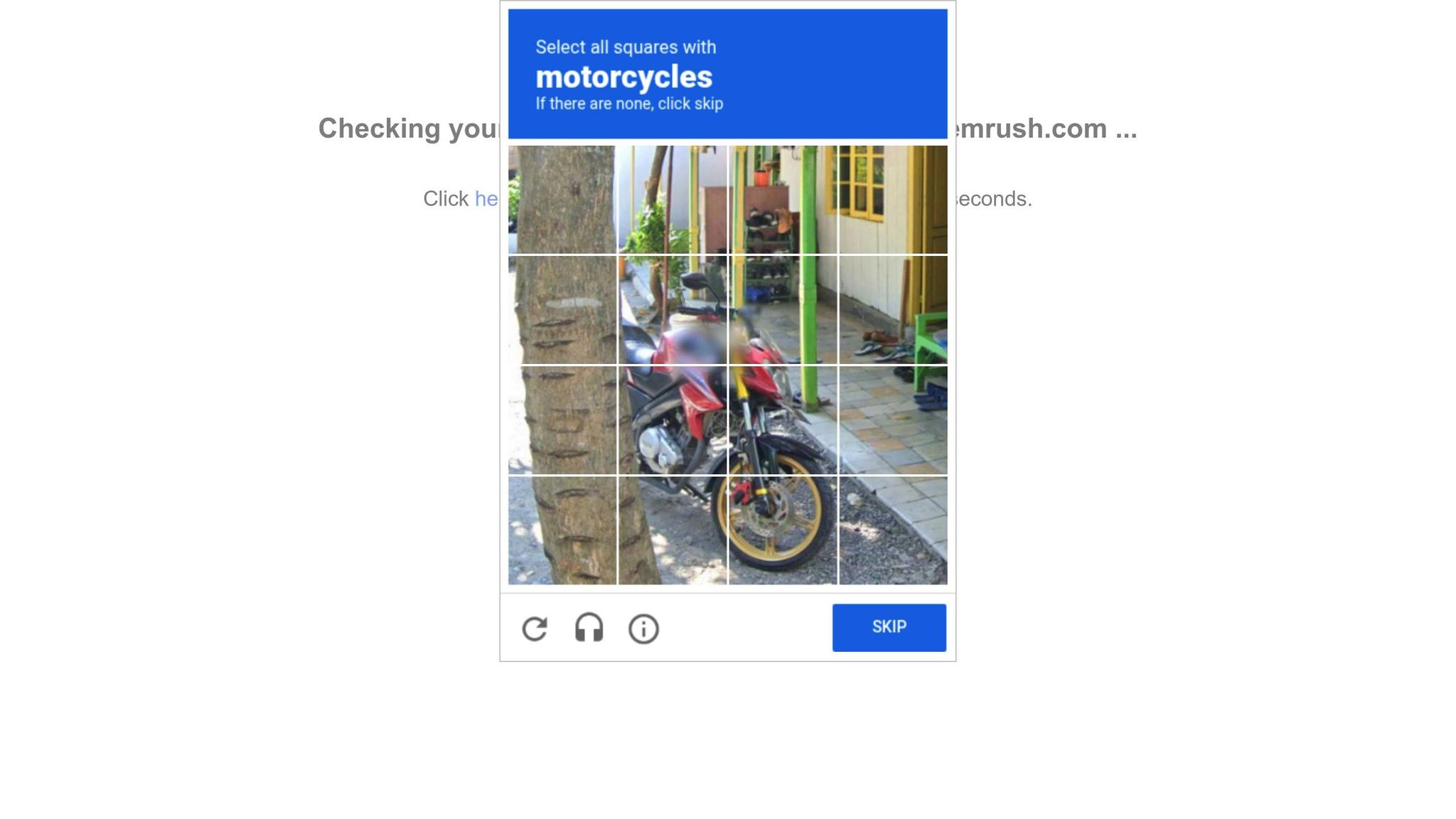
Why Mobile Crawlability Matters in 2025
Mobile crawlability has become a cornerstone of SEO success. Ever since Google's mobile-first indexing update, the search engine now prioritizes the mobile version of websites for indexing and ranking. This shift means that if your mobile site isn’t easily crawlable, your entire SEO strategy could take a hit.
The numbers paint a clear picture of mobile’s importance. Around 96.3% of internet users access the web through mobile devices, and as of April 2025, mobile traffic accounts for 63.15% of all website visits.
The Direct Impact on Search Performance
When Google’s crawlers struggle to access your mobile site, affected pages won’t be indexed, no matter how well-optimized they are for desktop. With 63% of Google searches in the U.S. happening on mobile devices, poor mobile crawlability can severely limit your visibility in search results.
Common technical issues, such as slow loading speeds, unresponsive designs, or blocked resources, can prevent crawlers from doing their job. These problems lead to fewer indexed pages, lower rankings, and a noticeable drop in organic traffic. Beyond search engine consequences, these technical flaws also hurt user experience, compounding the damage.
Speed and User Experience Are Intertwined
Mobile crawlability isn’t just about ensuring search engines can access your site - it’s also tied to how users interact with it. Mobile users tend to abandon pages that take longer than three seconds to load, and a mere two-second delay can increase bounce rates by 103%. These behaviors send strong signals to search engines about your site’s performance, and slower load times can result in fewer pages being fully indexed.
Business Impact Beyond Rankings
In 2025, mobile SEO isn’t just about rankings - it’s about driving conversions. With 82% of U.S. shoppers using their phones for "near me" searches and 57% of local search queries happening on mobile, poor mobile crawlability means missing out on high-intent traffic. The e-commerce stakes are even higher: in 2024, 56% of online sales were made on smartphones, a figure projected to hit 88% by 2027. Without strong mobile crawlability, businesses risk losing valuable conversion opportunities.
The Growing Complexity of Mobile Crawlability
As mobile browsing evolves, so do the technical demands of maintaining crawlability. Today’s mobile users expect sites to handle everything from dynamic content and interactive features to complex JavaScript rendering - all while remaining accessible to search engine crawlers. With voice search becoming more common, mobile sites must also accommodate natural, conversational queries, adding another layer of complexity.
To meet these challenges, businesses need specialized tools designed to address mobile crawlability issues. These tools, which are discussed later in this article, are key to keeping up with the ever-evolving mobile landscape.
1. Top SEO Marketing Directory
The Top SEO Marketing Directory acts as a curated resource, connecting businesses with tools designed to tackle mobile crawlability challenges tailored to their specific SEO goals.
Mobile-Specific Crawl Analysis
This directory categorizes tools with features like responsive design testing, mobile speed analysis, and JavaScript rendering. Whether you're managing an e-commerce site with thousands of mobile product pages or a local business focused on mobile-friendly contact pages, the directory helps you find the tools best suited to your industry and technical needs.
Insights into Mobile Usability and Performance
The tools listed in the directory focus on identifying mobile usability issues and performance bottlenecks. This is essential, considering that 55% of visitors leave a site within 15 seconds.
These tools dive into critical mobile performance metrics, often using advanced testing methods. For example, research from Nielsen Norman Group shows that testing just five users in a single cycle can uncover 85% of usability issues. This level of insight ensures that mobile crawlability problems don’t slip through the cracks.
Scalability for Different Website Sizes
The directory offers solutions for businesses of all sizes, from free tools like Google Search Console to enterprise-level platforms with advanced collaboration features. The transparent pricing structure ensures you only pay for what you need, avoiding unnecessary expenses.
Scalability and cost efficiency are key, but the directory also emphasizes tools with strong reporting capabilities, ensuring the insights you gain are actionable.
Reporting and Visualization Capabilities
The tools featured in the directory provide detailed reporting options, from technical audit summaries to executive-friendly dashboards. These reports turn complex crawlability data into practical insights. For businesses requiring more tailored solutions, premium and enterprise plans offer advanced reporting features.
Many tools also integrate mobile crawlability data with broader business metrics, offering a complete picture of how mobile performance impacts your overall objectives. This makes it easier to align technical SEO efforts with business goals.
2. Screaming Frog SEO Spider
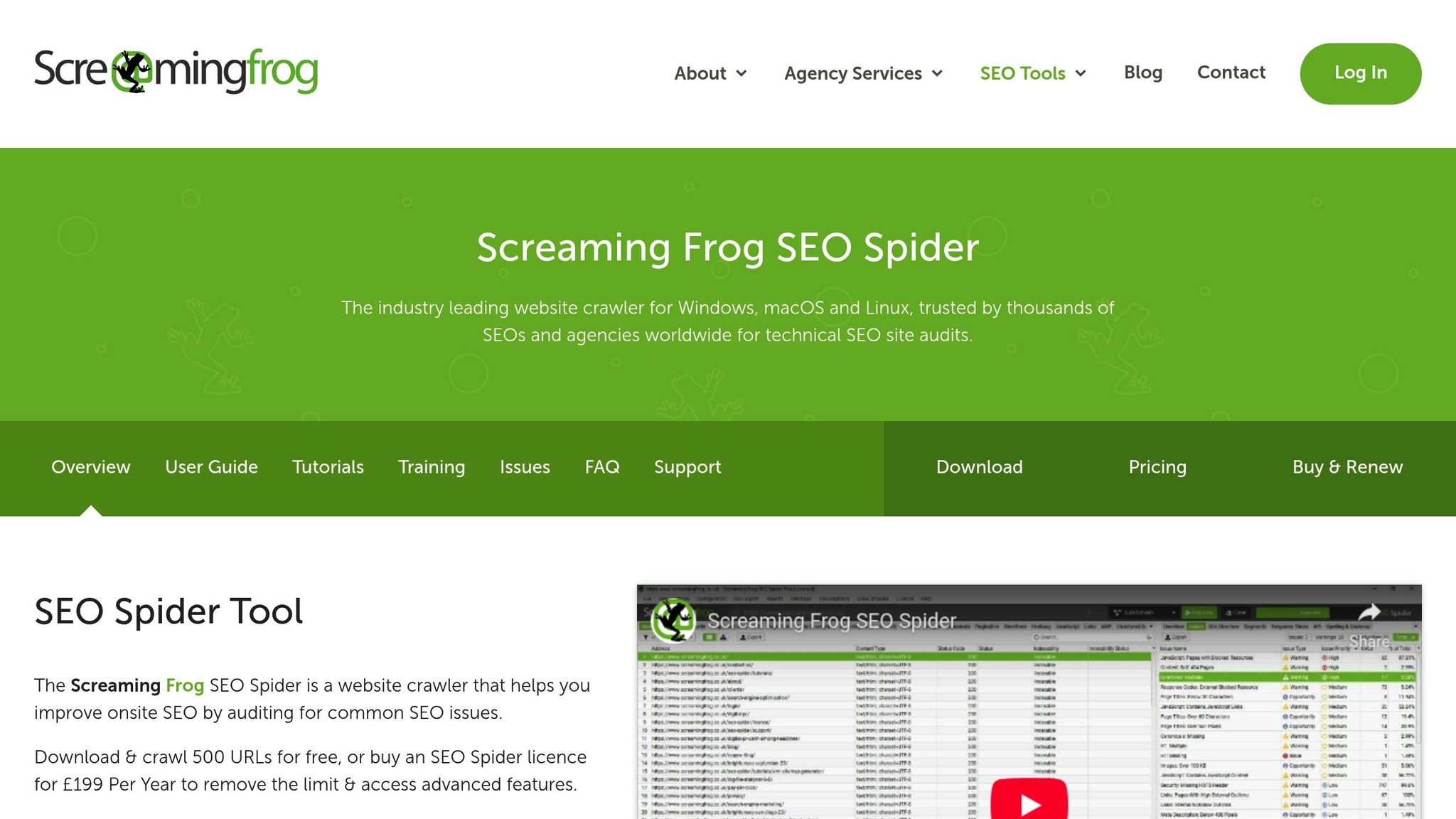
As mobile crawlability remains a cornerstone of SEO in 2025, Screaming Frog SEO Spider steps in to provide an in-depth, hands-on approach to mobile crawl analysis. This desktop-based crawler offers businesses - big or small - an efficient way to handle mobile crawlability audits. Thanks to its integration with Lighthouse, it transforms complex data into clear, actionable insights.
Mobile-Specific Crawl Analysis
Screaming Frog uses Lighthouse to perform large-scale mobile usability audits, identifying key issues like viewport configuration errors, small or poorly spaced tap targets, and content scaling problems. By simulating crawls with various user agents, including Googlebot Mobile, it provides a realistic view of how search engines perceive your mobile site. The tool also detects and stores mobile alternate links, helping locate separate mobile versions of URLs.
Insights into Mobile Usability and Performance
The Mobile tab is where usability meets performance. It pinpoints common mobile issues with user-friendly filters. For example:
- Viewport Not Set: Flags pages missing a proper viewport meta tag.
- Target Size: Highlights tap targets that are too small or too close together.
- Content Not Sized Correctly: Detects content extending beyond the viewport.
- Illegible Font Size: Identifies text that's too small for mobile screens.
By integrating with PageSpeed Insights via API, Screaming Frog provides a deeper layer of mobile-friendly checks directly within its interface. This allows users to address usability issues efficiently, regardless of website size.
Scalability for Different Website Sizes
Whether you're managing a small site or a sprawling enterprise, Screaming Frog adapts to your needs. The free version supports up to 500 URLs, making it perfect for smaller businesses or individual site owners. For larger-scale operations, the paid version - priced at $279 per year - removes this limit.
"Screaming Frog is a mirror reflecting the intricate workings of your website's SEO, allowing us to make precise adjustments that steer towards optimal online performance." - Stephen McClelland, ProfileTree's Digital Strategist
Enterprise users benefit from advanced features like database storage for faster processing and improved data handling. The tool's RegEx functionality enables targeted crawls, focusing on specific sections of a site to prevent system overload while ensuring priority areas are thoroughly analyzed.
Reporting and Visualization Capabilities
Screaming Frog excels at turning raw crawl data into actionable insights. The Lighthouse Details tab provides a detailed breakdown of mobile usability issues. Bulk exports of this data, including Lighthouse specifics, are accessible via the Reports menu. With its robust filtering system, users can quickly identify and isolate mobile issues across thousands of pages, making large-scale optimization more manageable than ever.
3. Google Search Console
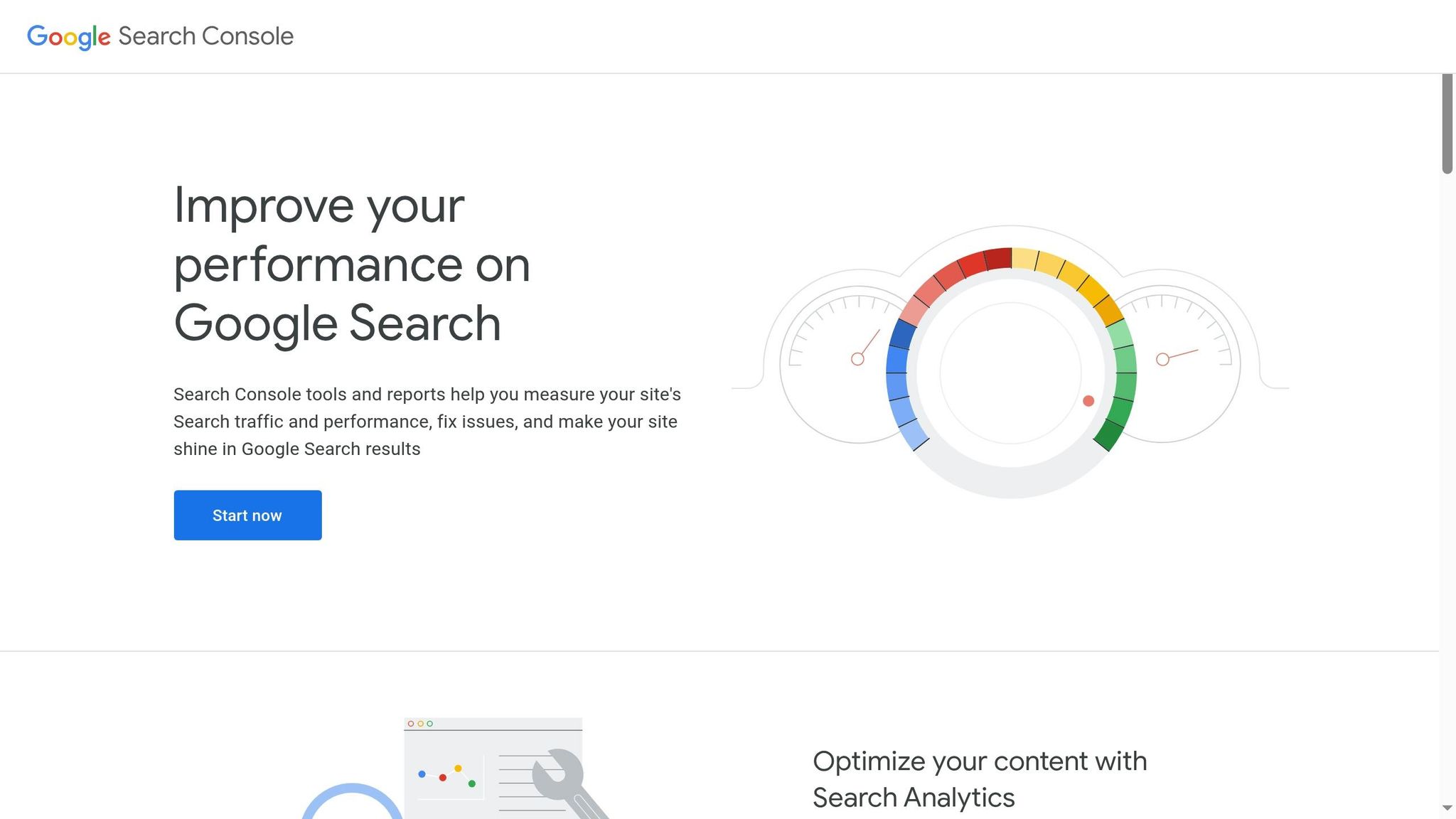
Google Search Console (GSC) is an essential tool for understanding how Google interacts with your mobile site. With Google's mobile-first indexing - where rankings rely heavily on your mobile site's content - GSC becomes indispensable for analyzing mobile crawlability. Best of all, it’s free to use.
Mobile-Specific Crawl Analysis
The Coverage Report in GSC is your go-to for spotting indexing issues that impact mobile crawling. It pinpoints URLs with errors that could hurt mobile-first indexing or cause your rankings to drop. Using the URL Inspection tool, you can test specific pages to see how Google crawls and renders them, ensuring your content and resources are accessible. For larger sites, the crawl stats section provides detailed data on Googlebot’s mobile activity, such as the number of pages crawled daily, offering deeper insights into crawl patterns and potential issues.
Insights into Mobile Usability and Performance
The Mobile Usability report is designed to uncover problems that could harm your site’s mobile search performance. It flags common usability issues and tracks Core Web Vitals - metrics like loading speed, interactivity, and visual stability - that are crucial for a seamless mobile experience. GSC also provides actionable insights into how Google perceives your mobile site, helping you monitor indexing status, fix crawl errors, and analyze mobile-specific search queries.
"Google Search Console is like a secret weapon for website owners, offering valuable insights about the online visibility of their content." - AIContentfy team
Scalability for Different Website Sizes
Whether you’re managing a small business site or a massive enterprise platform, GSC adapts to your needs. It delivers in-depth mobile crawlability insights across all website sizes. For larger sites, the crawl stats data is particularly helpful in identifying bottlenecks and optimizing site structure to improve crawl efficiency.
Reporting and Visualization Capabilities
GSC shines when it comes to presenting complex data in an easy-to-understand format. The Mobile Usability report organizes issues by type and severity, making it simple to prioritize fixes and address affected URLs. Its filtering and segmentation tools let you analyze performance by date, device type, or specific issues. You can even export the data for deeper analysis or create custom reports to focus on your most pressing mobile concerns. Visual graphs and charts make it easy to track progress over time, showing how your mobile optimization efforts are impacting search performance and setting the stage for future improvements.
4. SEMrush Site Audit
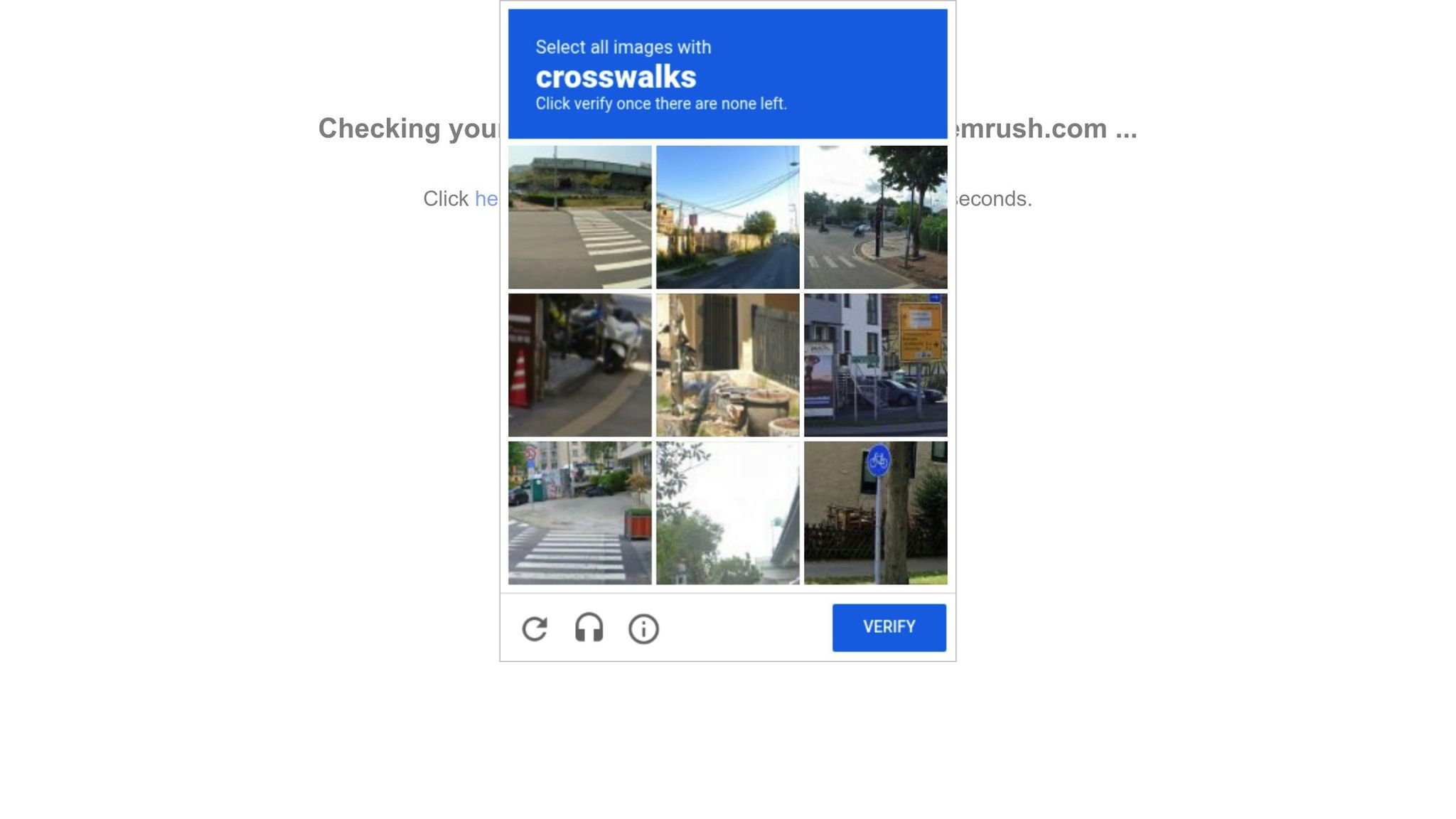
With mobile-first indexing now a priority, SEMrush Site Audit offers a deep dive into mobile crawlability issues. It’s equipped to detect over 140 technical and SEO-related problems, making it a powerful tool for mobile optimization efforts.
Mobile-Specific Crawl Analysis
SEMrush Site Audit gives you the flexibility to choose between desktop and mobile crawling during audits. You can configure it to use either SemrushBot-Mobile or GoogleBot's mobile user agent. If your site relies on AMP pages, the tool allows you to prioritize their crawling and pinpoints key mobile-specific issues, such as AMP errors and improper viewport meta tag settings.
For websites with high mobile traffic, SEMrush Pro users can crawl up to 100,000 pages monthly, with individual audits covering as many as 20,000 pages. This level of capacity ensures even large e-commerce or enterprise sites are thoroughly analyzed. The insights gained here pave the way for actionable improvements to mobile performance.
Insights into Mobile Usability and Performance
The tool keeps an eye on critical factors like Core Web Vitals, structured data, and HTTPS implementation, all of which are essential for mobile performance. Since Google advises mobile pages to load in under one second, SEMrush provides tailored recommendations to help meet this benchmark. With mobile search dominating desktop and most consumers relying on smartphones for product research, these optimizations are more important than ever.
"Semrush's Site Audit tool is my personal favorite, as it checks for over 140 technical issues - making it one of the most comprehensive solutions in the industry." - Tushar Pol, SEO Expert
SEMrush also offers specific guidance for mobile optimization, such as keeping title tags between 50–60 characters and meta descriptions under 105 characters for better mobile display. Additional recommendations include improving text readability, optimizing tap targets, configuring viewports correctly, enhancing media playback, and reducing load times - all tailored to mobile users. These insights are scalable for websites of all sizes.
Scalability for Different Website Sizes
Whether you’re managing a personal blog or a sprawling enterprise site, SEMrush Site Audit adapts to your needs. It scans for over 130 technical and SEO errors, generating detailed reports for any level of site complexity. It covers critical areas like crawlability, HTTPS implementation, international SEO, performance metrics, and internal linking structures. This ensures both small and large websites receive a thorough analysis of their mobile crawlability.
Reporting and Visualization Capabilities
One of the standout features of SEMrush Site Audit is its ability to transform technical data into clear, actionable insights. The tool categorizes issues by priority, allowing you to focus on the most pressing errors before addressing warnings and notices. This prioritization is especially helpful for mobile optimization, enabling you to tackle the most critical crawlability problems first.
Additionally, you can set up Position Tracking campaigns specifically for mobile devices to monitor the results of your optimization efforts. For example, research shows that when a page’s load time increases from 1 to 3 seconds, bounce probability jumps by 32%. At 10 seconds, that figure skyrockets to 123%. These stats highlight just how much mobile performance can impact user behavior and search rankings.
sbb-itb-5be333f
5. Sitebulb
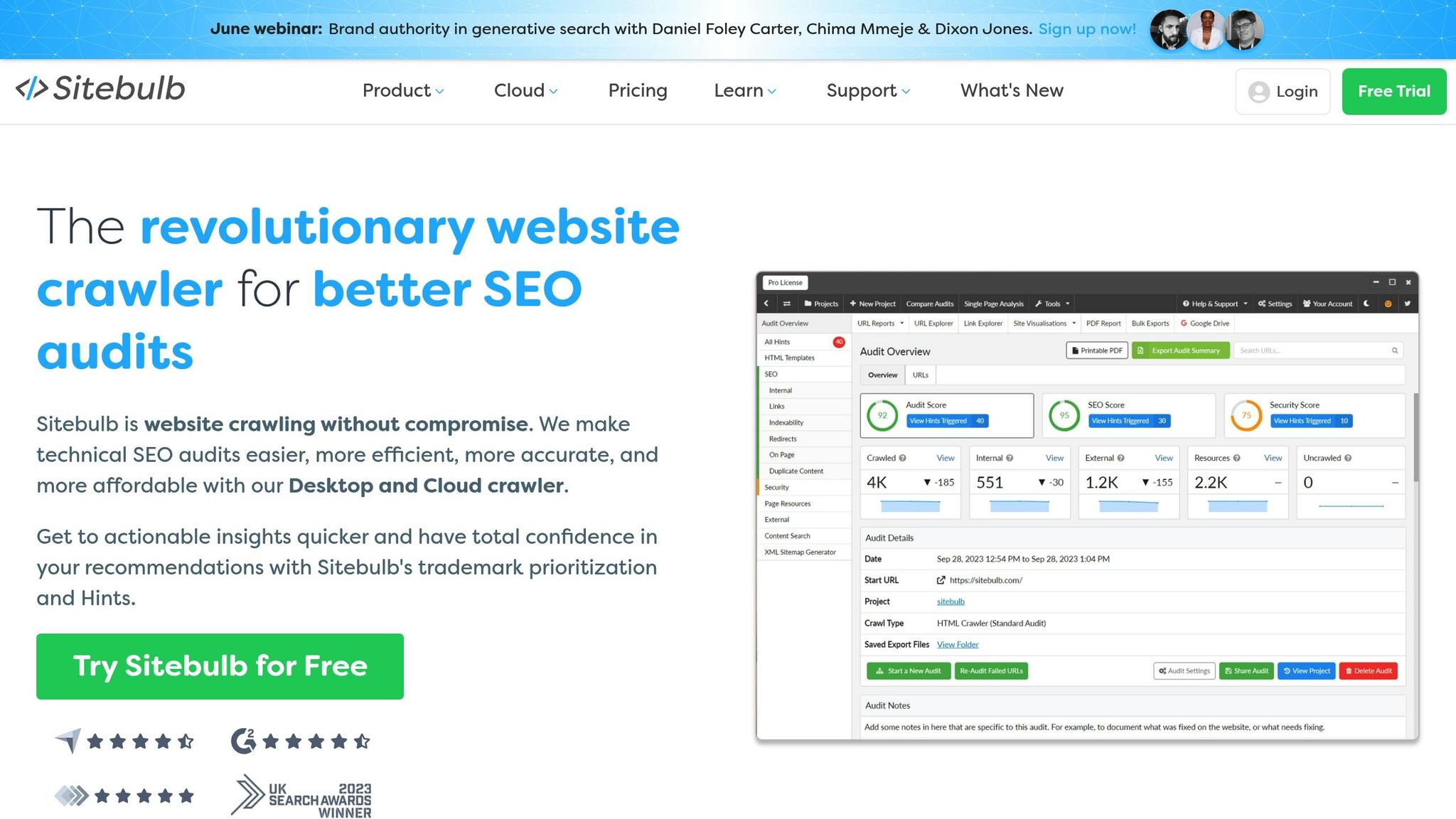
Sitebulb stands out as a powerful tool for assessing mobile crawlability, blending advanced technical analysis with easy-to-digest visual reports. Trusted by over 5,000 SEOs globally and boasting a 4.5 out of 5 rating on G2.com, it has earned accolades like the Best Search Software Tool at the US and UK Search Awards.
Mobile-Specific Crawl Analysis
Sitebulb's mobile-focused features are designed to identify and address pages that don't meet mobile-friendly standards. By simulating different user agents, it reveals how your site performs for both mobile and desktop crawlers. It targets common mobile issues such as oversized pages for 3G connections and tap targets that are either too small or too close together. The tool also compares rendered HTML with source HTML, analyzing critical mobile elements like meta robots, canonical tags, titles, meta descriptions, and both internal and external links. These checks provide a solid foundation for improving mobile performance.
Insights into Mobile Usability and Performance
Sitebulb digs deeper than basic crawling, identifying over 300 SEO issues with a focus on mobile usability. It evaluates loading speed and performance metrics that directly impact mobile user experience and search rankings. Using the AXE engine, it conducts over 95 accessibility checks to flag WCAG and Section 508 violations. Mobile-friendly hints are prioritized, making it easier to tackle the most pressing issues.
Scalability for Different Website Sizes
Whether you're managing a small site or a massive enterprise platform, Sitebulb offers scalable solutions. The Desktop version can handle up to 500,000 URLs per audit, making it a great fit for small to medium-sized websites. For larger operations, Sitebulb Cloud scales up to 10 million URLs per audit.
| Version | Crawl Capacity | Best For | Price Range |
|---|---|---|---|
| Desktop Pro | 500,000 URLs per audit | Small/Medium | $35/month |
| Cloud Small | 1 million URLs/month, 250k/audit | Growing businesses | $245/month |
| Cloud Extra Large | 30 million URLs/month, 10 million/audit | Enterprise | $25,000/year |
Jon Clark, Managing Partner at Moving Traffic Media, shared how Sitebulb Cloud's scalability streamlined their processes. "The ability for our team to work from the same crawl data - with fast crawl completion times and scheduled crawling - helped us improve productivity and create consistent internal workflows".
Reporting and Visualization Capabilities
One of Sitebulb's standout features is its ability to turn complex crawl data into actionable insights through visual reports. Interactive crawl maps showcase site structure, highlighting isolated content, pagination chains, and content hubs.
"The visual reports make auditing so much easier, and the way Sitebulb prioritizes the hints and suggestions is awesome." - Martin Hayman, Wild Sprout
The platform also generates detailed PDF and CSV reports, making it simple to share findings with stakeholders. By linking keyword rankings and click data to technical issues, Sitebulb allows users to differentiate between brand and non-brand traffic across devices.
"Scoring metrics and quick insights with descriptions help everyone understand what it reports before you deep dive into the crawl data." - Yanni Papaioannou, iCrossing
While users often praise its ease of use and comprehensive features, some have pointed out occasional bugs and performance hiccups. Even so, Sitebulb's robust reporting tools provide a clear roadmap for improving mobile SEO performance.
6. DeepCrawl (Lumar)
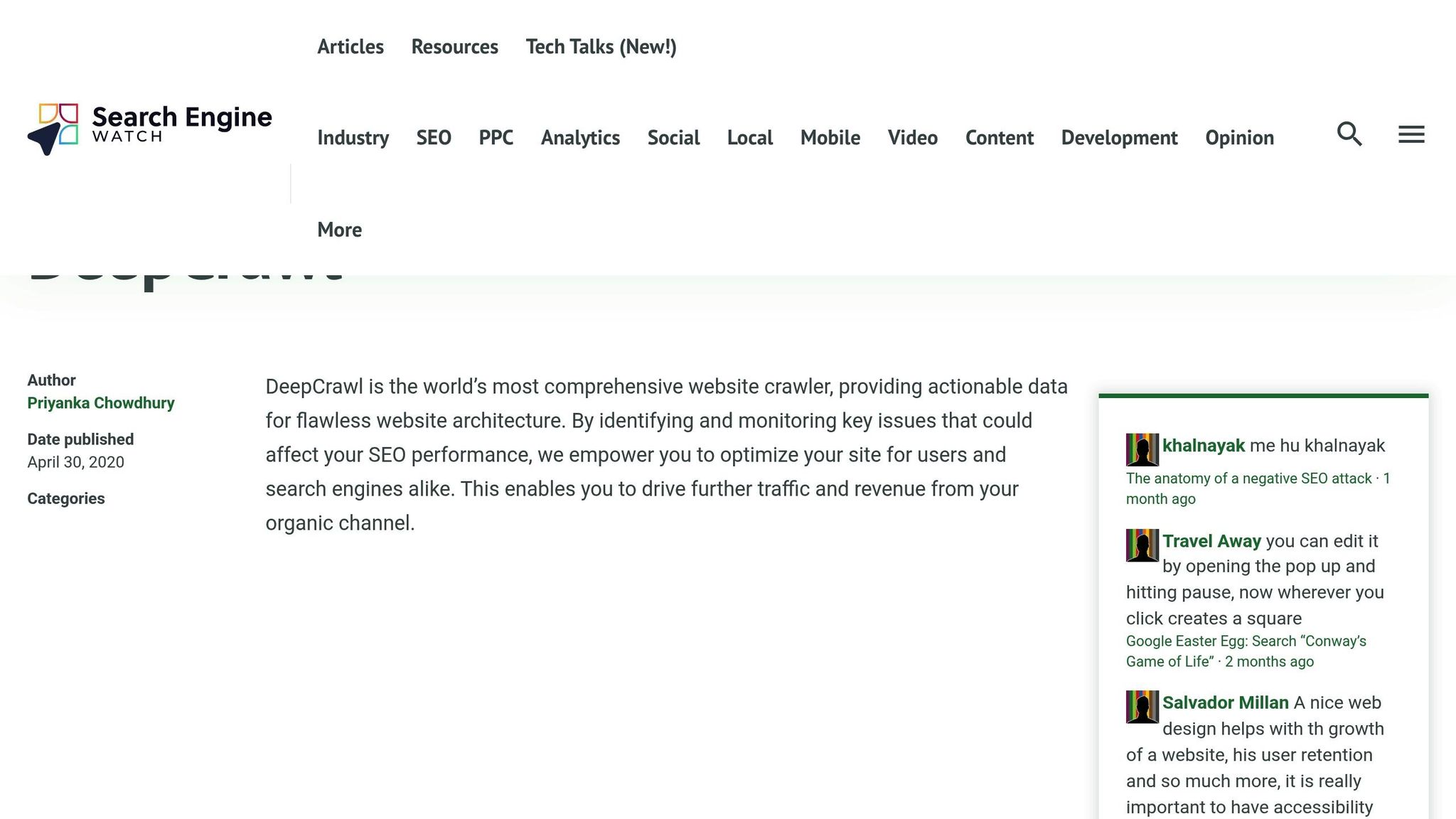
DeepCrawl, now known as Lumar, stands out as a go-to tool for analyzing mobile crawlability on enterprise websites. One expert even described it as "Screaming Frog on steroids" - a nod to its powerful capabilities. Lumar is particularly well-suited for handling large, intricate websites, making it a favorite among businesses that need in-depth mobile SEO analysis.
Mobile-Specific Crawl Analysis
Lumar specializes in identifying critical differences between mobile and desktop pages. It highlights content mismatches and ensures that high-priority pages are optimized for mobile - a key factor under Google's mobile-first indexing approach. By integrating with Google Search Console, Lumar provides device-specific SERP metrics and detailed comparisons of desktop and mobile configurations. This helps uncover subtle inconsistencies that could impact mobile indexing.
The platform can simulate crawls using a mobile user agent, offering a clear look at what Googlebot Smartphone sees. It also incorporates log file data for real-time monitoring, feeding these insights into its robust reporting tools for a comprehensive view of your site's mobile performance.
Reporting and Visualization Capabilities
Lumar excels in delivering detailed, customizable reports that highlight mobile-specific issues. Key reports include:
- Mobile Content Mismatch Report: Flags mobile pages where title or H1 tags differ from their desktop versions.
- Mobile Word Count Mismatch Report: Identifies pages with significant word count differences between mobile and desktop.
- Mobile Links In Mismatch Report: Pinpoints mobile pages with fewer incoming internal links compared to their desktop counterparts.
- Mobile Links Out Mismatch Report: Highlights mobile pages with fewer outgoing internal links than their desktop equivalents.
These reports streamline the process of tracking SEO metrics, resolving technical issues, and maintaining overall site health. They also address common mobile problems, such as missing alt text on images.
Scalability for Different Website Sizes
Lumar's ability to scale makes it a standout choice for enterprise-level use. Its advanced site crawler is designed to handle even the most complex architectures, efficiently analyzing websites with thousands of pages. This makes it an excellent option for e-commerce platforms, publishers, agencies, and large brands.
For pricing, Lumar offers flexible options: the Light package starts at $14 per month for up to 10,000 URLs, Light Plus costs $62 per month, and custom packages are available for larger enterprises.
"Lumar gives you everything you need for website analysis in one place, clearly laid out, rather than using multiple sources or overwhelming you with data. And the Lumar team is really friendly, helpful, and responsive. If I have any questions, they get back to me straight away, so I don't have to wait weeks to respond to simple questions. Working with both the Lumar platform and team really is seamless." - Kunal Sharma, Senior SEO Manager
Lumar also offers advanced features, including JavaScript rendering to detect indexing issues and tools to test XML sitemaps. These capabilities ensure that all important pages are listed and help identify broken pages that might disrupt the user experience. With these tools, Lumar cements its position as a top-tier solution for managing complex web architectures and optimizing mobile performance.
7. OnCrawl
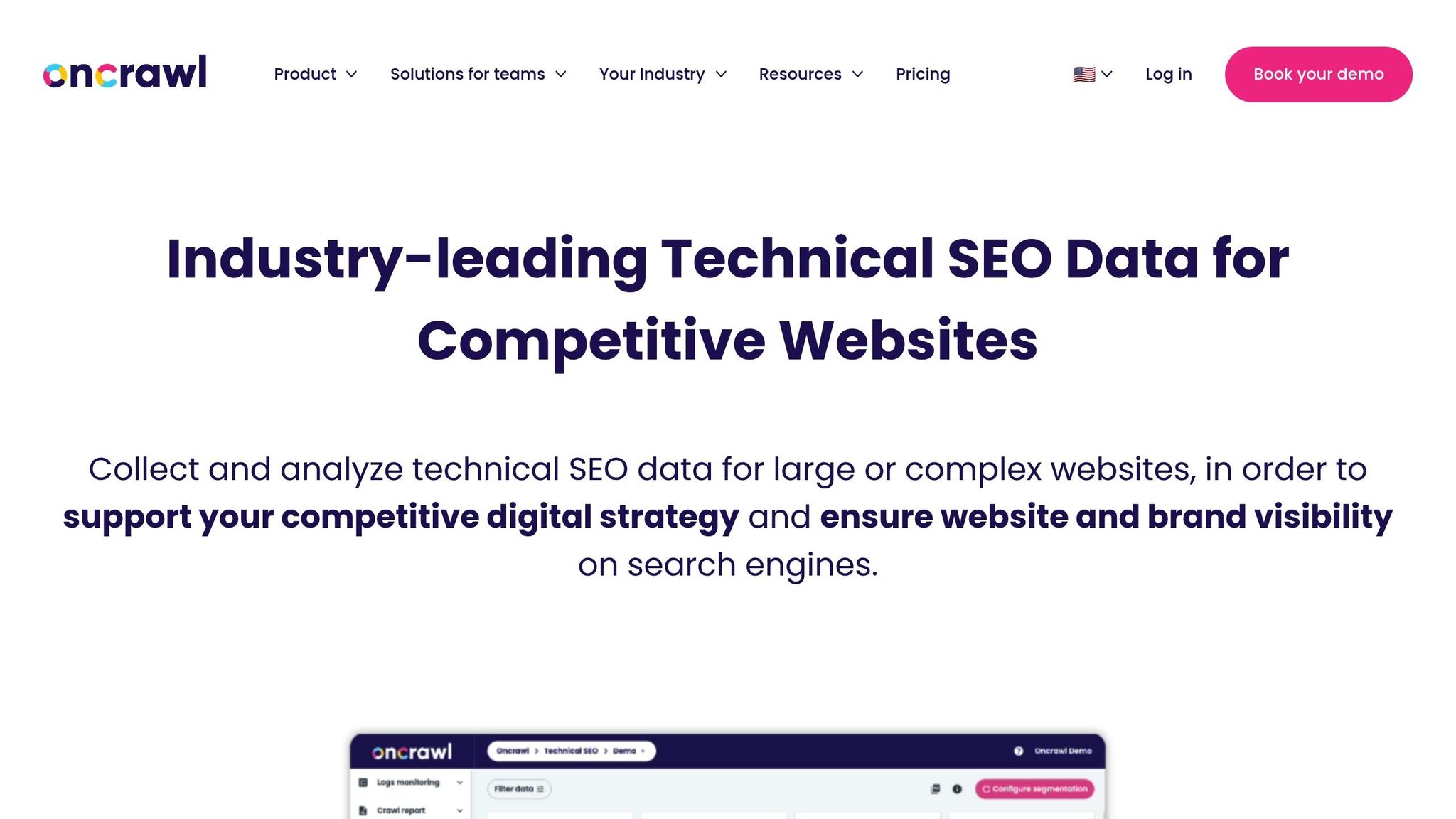
OnCrawl provides detailed analysis tailored for mobile-first indexing. With mobile devices accounting for 63.38% of web searches, its mobile-focused tools help pinpoint gaps in performance between desktop and mobile versions.
Mobile-Specific Crawl Analysis
OnCrawl specializes in optimizing for mobile-first and mobile-only indexing, offering insights that are hard to find elsewhere. It identifies cases where desktop pages perform well but encounter errors in their mobile versions.
The platform tracks the crawl frequency of the mobile Googlebot, making it easier to determine when your site transitions to mobile-first indexing. Users can choose between the default mobile or desktop bot or even input a custom user-agent for crawling.
OnCrawl also supports flexible settings for crawling JavaScript links, development environments, and aggregating data. This flexibility is especially useful for sites with complex mobile setups. These features create a strong foundation for understanding and improving mobile user behavior.
Insights into Mobile Usability and Performance
OnCrawl helps analyze how users interact with websites on mobile devices, focusing on key metrics like impressions, clicks, and click-through rates for important keywords. It flags issues such as slow loading times or broken links that can disrupt the mobile browsing experience.
The platform evaluates pages using metrics like bounce rate and time spent on pages. It also provides detailed mobile crawl data with customizable parameters and filters, making it easier to diagnose and fix performance problems.
For optimization, OnCrawl suggests actions like compressing images, fixing status codes, improving caching, and reducing redirects to achieve mobile load times under 2 seconds. Additionally, it highlights the importance of ensuring AMP pages match the content of their desktop counterparts to avoid SERP cannibalization.
Scalability for Different Website Sizes
OnCrawl handles websites of all sizes with ease, offering robust segmentation and scalability. Its SEO Log Analyzer, for instance, processes up to 100 million search engine requests daily.
The pricing is designed to suit various business needs. The Explorer package supports up to 100,000 URLs per month for $49 per month, while the Ultimate package handles up to 2 million URLs monthly at $399 per month (annual pricing). There are also custom packages for agencies and enterprises, making OnCrawl a favorite among small to medium-sized businesses for its flexibility and features.
Reporting and Visualization Capabilities
OnCrawl excels in reporting and visualization, offering custom dashboard reports and unlimited analyses. Features like crawl-over-crawl comparisons and log-file analysis help optimize crawl budgets. Users can create multiple crawl profiles with different criteria and set up automated reports to track performance changes.
The platform’s data explorer includes customizable filters and visualizations, such as internal linking structures and SWOT analyses of website performance. It integrates seamlessly with tools like Google Analytics, Adobe Analytics, and Google Search Console.
Additionally, users can cross-reference over 1,000 SEO metrics, define custom KPIs, and segment crawl data to uncover trends in indexability, crawl frequency, and ranking potential. This level of detail makes OnCrawl a powerful tool for identifying and addressing mobile-specific optimization needs.
How to Choose the Right Mobile Crawlability Tool
Selecting the best mobile crawlability tool for your needs depends on a mix of factors: your website's size and complexity, your budget, and your team's technical skillset. Below, we'll break down these considerations to help you make a well-informed decision.
Understanding Your Website's Scale and Complexity
If your website is small and straightforward, free tools like Google Search Console can provide the basic insights you need without overwhelming you. It’s a great starting point for beginners looking to address mobile usability and crawlability issues.
However, as your site expands - growing to thousands of pages with intricate structures - you’ll need more advanced tools. Platforms like Screaming Frog, Semrush, and Ahrefs are designed to handle larger websites, offering deeper insights and the ability to simulate how search engines interact with your site. These tools are particularly useful for identifying and resolving technical issues on more complex setups.
Budget Considerations Across Business Types
Your budget will also play a big role in determining the right tool for you:
- Freelancers and Small Businesses: If you’re working on a tight budget, free options like Google Search Console are indispensable for basic checks. Screaming Frog, for instance, offers a free version that crawls up to 500 URLs, while their paid license costs $259 annually. Tools like Seobility provide affordable plans starting at around $55 per month.
- Agencies: Managing multiple client websites? You’ll likely need a platform with advanced features and robust reporting. For example, Semrush offers plans ranging from $139 per month (Pro) to $499.95 per month (Business). Similarly, Ahrefs plans start at $129 per month (Lite) and go up to $999 per month (Enterprise). These costs are often justified, as 72% of marketers report seeing improved rankings after investing in site optimization.
- Enterprise-Level Businesses: For large corporations handling massive websites with complex architectures, tools like DeepCrawl (Lumar) are worth the investment. These platforms are built for scalability and offer custom integrations. The ROI can be substantial - one eCommerce company, for example, saw a 55% boost in organic traffic and a 32% increase in conversions within six months of investing $30,000 in their website redevelopment. This translated to an additional $120,000 in revenue.
Technical Expertise Requirements
Your team’s technical expertise will impact how effectively you can use these tools. Desktop software like Screaming Frog offers extensive functionality but often requires a deeper understanding of technical SEO to maximize its potential. On the other hand, cloud-based tools tend to be more user-friendly, offering visual reports and collaboration features that are easier for non-technical teams to navigate.
AI-powered tools are also gaining traction, automating audits and providing actionable recommendations. These can bridge the gap for teams with limited technical knowledge, making advanced analysis more accessible.
Measuring Return on Investment
When evaluating ROI, consider the balance between cost, ease of implementation, and the impact of the tool on your website’s performance. Free tools are great for basic diagnostics but come with limitations, such as restricted URL coverage and fewer export options. Paid tools, on the other hand, offer advanced features like automated scheduling, detailed insights, and dedicated support.
For context, even a 1-second delay in page load time can reduce conversions by 7%. This highlights how investing in the right tool can directly influence your bottom line.
| Tool Category | Best For | Key Benefits | Investment Level |
|---|---|---|---|
| Free Tools (Google Search Console) | Small websites, beginners | Essential insights, mobile usability reports | $0 |
| Mid-Range Tools (Screaming Frog, Seobility) | Freelancers, growing businesses | Comprehensive crawling, technical SEO features | $259–$600 per year |
| Premium Platforms (Semrush, Ahrefs) | Agencies, marketing teams | Advanced features, client reporting, multi-site support | $1,548–$11,988 per year |
| Enterprise Solutions (DeepCrawl, OnCrawl) | Large corporations, complex sites | Scalability, custom integrations, dedicated support | Custom pricing |
To maximize the value of your investment, track key metrics monthly and adjust your strategy as needed. This ongoing evaluation ensures your crawlability tools continue to deliver measurable results in an ever-changing digital landscape.
Conclusion
Mobile crawlability has become the backbone of SEO in 2025. With mobile usage leading the way in online activity, ensuring your site is optimized for mobile isn’t just important - it’s essential. Google’s shift to mobile-first indexing means your mobile site plays a primary role in determining your rankings, making tools that assess and improve crawlability indispensable for staying ahead in a competitive landscape.
The numbers speak for themselves. In 2024, 56% of all online sales happened through smartphones, and this is expected to skyrocket to 88% by 2027. On the flip side, a poor mobile experience can reduce the likelihood of a purchase by 62%. That’s not just a statistic - it’s lost revenue and missed opportunities for growth.
Whether you’re using beginner-friendly tools like Google Search Console or advanced platforms like DeepCrawl, these solutions are designed to tackle crawlability challenges head-on. They help identify problems that often lead to lost traffic and conversions. Keep in mind, over 90% of web pages get zero organic traffic from Google, and crawlability and indexing issues are often to blame. These tools can make the difference between being invisible and being found.
When choosing a tool, it’s all about finding the right fit for your site’s specific needs. A smaller business might get everything it needs from the free features of Google Search Console, while larger enterprises managing thousands of pages may benefit from the advanced functionalities of premium platforms. The goal is to align your choice with your website’s complexity, budget, and technical expertise, ensuring your investment makes sense and delivers measurable results.
Take action today: audit your mobile crawlability with one of these tools. Pinpoint the issues holding your site back and create a clear plan to fix them. With 76% of users conducting "near me" searches on mobile visiting a physical business within 24 hours, waiting to optimize your site for mobile could mean losing out on valuable traffic and conversions.
The mobile-first era is here to stay. The question is, which tool will you choose to unlock your site’s full potential?
FAQs
Why is mobile crawlability important for my website's SEO in 2025?
Why Mobile Crawlability Matters for SEO in 2025
Mobile crawlability has become a cornerstone of SEO success, especially with Google's mobile-first indexing. This approach means Google primarily evaluates the mobile version of your site to determine its rankings. Considering that mobile devices now account for nearly 64% of global web traffic, a site that isn’t optimized for mobile could see a significant drop in both visibility and visitor engagement.
Speed is another critical factor. Mobile users don’t have the patience for sluggish pages - 53% will abandon a site if it takes more than three seconds to load. A fast, mobile-friendly site not only keeps users happy but also gives your rankings a serious boost. In today’s competitive online space, having a mobile-optimized site isn’t just a good idea - it’s essential for staying relevant.
What features should you prioritize in a mobile crawlability analysis tool?
When selecting a tool for mobile crawlability analysis, prioritize features that deliver a comprehensive and efficient review of your website. It's important to choose a tool that can pinpoint technical issues such as broken links, improper redirects, and duplicate content. At the same time, it should evaluate mobile usability, ensuring your site functions seamlessly on smaller screens.
Some other must-have features include site visualization, which helps you map out your website's structure, and integration with platforms like Google Analytics and Search Console for deeper insights. Real-time reporting is another valuable feature, allowing you to adjust your SEO strategies on the fly. Lastly, tools that can create and validate XML sitemaps are crucial for better indexing and visibility in search engines.
What’s the best way to choose a mobile crawlability tool for my website’s size and needs?
To choose the best mobile crawlability tool for your website, keep these three factors in mind:
- Scalability: Make sure the tool can handle the size and complexity of your site. If you’re managing a large website, you’ll need a tool that can perform extensive crawls without slowing down or missing critical data.
- Key Features: Prioritize tools that provide insights specific to mobile performance. Look for capabilities like mobile-friendly checks, rendering previews, and details on how search engines interpret your mobile site. These are essential for optimizing under mobile-first indexing.
- User-Friendliness: Opt for a tool with an intuitive interface that delivers clear, actionable insights. This is especially helpful if your site has a complex structure or if you’re still getting familiar with technical SEO.
By focusing on these aspects, you can find a tool that matches your website’s requirements and helps boost its mobile search performance.
